I’ve struggled to find the right picture with which to introduce the remarkable life of Ohioan Ernie Wright. Ernie starred on the football fields of Toledo, Columbus, Los Angeles, San Diego and Cincinnati but his greatest legacy lie in his founding and building Pro Kids, a remarkable inner city education and sports facility that has been a prized charity of the PGA and USGA. Ernie died of pancreatic cancer in 2007 but his story is so big and so impactful that the choice of where to begin is as delicious as it is difficult.
A first thought was to describe a drive east on I-8 from the shores of San Diego, getting off the freeway at the Montezuma exit and heading through a perplexing neighborhood on the way to San Diego State University. On the one hand you cannot help but notice the colorful vegetation basking in the warm sunshine. But as you keep driving and take a turn southward toward University Blvd, you notice that you are entering a neighborhood that can politely be termed transitional, but by the time you turn right on University and then take another quick right, you realize you have arrived in the midst of a run-down struggling inner city neighborhood.
But in the midst of this depressing environment, all the sudden you pull into the parking lot of Colina Park Golf Course to find a lush and beautiful oasis, that with its beautiful welcoming building out front, could easily be mistaken for a country club (but for its par 3 size). But coming to and from this paradise are young people of every color and background. Walking past the patter of happy children and the beautiful waterfall you see the bronze bust of the man identified as Ernie Wright.
I could choose pictures at other locations to start this story. I could go up 35 miles to the Marine Corps town of Oceanside, which also has impoverished areas, one of which is home to the Pro Kids, Ely Callaway Golf and Learning Center for Children.
Or, just a few miles from Oceanside, at the La Costa Resort and Spa, where greats such as Jack Nicklaus, Tiger Woods, Arnold Palmer and Lee Trevino prevailed in PGA play, I could introduce you to Ernie by the trophy that greets you as you enter the men’s locker room.
I could introduce you with a photo of Ernie surrounded by his twin mentors, father Floyd and coach Woody Hayes, and I could tell you about Ernie’s greatness at Ohio State before Ernie was enticed to leave in 1960 (with the support of Coach Hayes) before his senior year to take the money of the founders of the start-up American Football League’s Los Angeles Chargers (who would move to San Diego a year later). 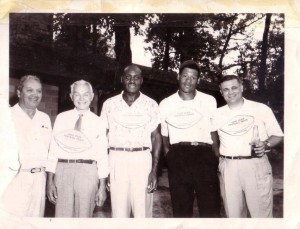
Or I could start with a picture of an imposing Ernie in Charger gear alongside his beautiful and demure wife Edith, whom Ernie met while she attended the rival, and now defunct, Toledo Libby High School. 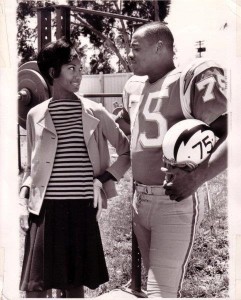
Or I could start with a picture of Ernie coming full circle to end his career as a Cincinnati Bengal in the state where it all started.
But I think the best place to start is by considering the span in between two family episodes without pictures. In April, 2014, at the beautiful seaside hotel in San Diego adjacent to the venerable Torrey Pines Golf Course, hundreds of San Diegans paid $300 a plate to celebrate the 20th Anniversary of Pro Kids, an inner city youth training and development academy that has flourished with golf as a backdrop in the inner city of San Diego.
Holding the celebration at a hotel overlooking Torrey Pines was altogether fitting. In those early years, the pros at Torrey Pines provided support and influence that helped elevate the new charity to a multiple PGA Charity of the Year and the model program for the USGA’s First Tee Program. Early founders of the program remember bringing young inner city new golfers in the program to introduce them to golf at a more glamorous level than the then run down impoverished Colina Park. Those founders had tears in their eyes as they realized that half of the youngsters, though living only a few miles from the ocean, stared in glorious wonder at their first sight of it.
But I digress. The banquet celebrated the young children served by Pro Kids with the full star power of San Diego, with technology, but most importantly with the kids themselves—kids, now many of them young men and women, who have gone on to successful careers after graduating from college with scholarships provided by Pro Kids, and computer and learning skills developed in the two story country club like structure at Colina Park.
The celebration continued in front of several tables filled with the family of Ernie Wright. To the right of the stage was the tall, charming and energetic widow of Ernie, Victoria, who is still actively involved in Pro Kids, and who was seated with long time outgoing Pro Kids CEO Marty Remmell and former CFO Amy Romaker (each of whom is among those in the long line of heroes and heroines in the Pro Kids story). Victoria sat, listened and softly wept as she once again saw the images of Ernie on the big screen in front and heard his voice.
To the left of the stage, and symbolically separated from Victoria by the divide of a table of the current leaders of Pro Kids, were two full tables that included Ernie’s look alike brother Floyd Jr. (“Uncle Buddy,” himself a star for the Toledo Rockets), his children, and their mother—the same, regal and beautiful, Edith. The children, whose success Ernie always attributed to the tireless devotion of their mother, are Cheryl, an internist at Sharp Hospital, Laura, a CPA in Los Angeles (or as Ernie would say, CPA to the stars), Ernie Jr., an affable and friendly lawyer who played football at the University of Kansas, and Howard, a Stanford alum and Qualcomm executive who played basketball professionally for eleven years, including three in the NBA.
Seven years after Ernie’s death, this family still basks in the charitable legacy that the family has so richly earned. And that Ernie gave life to.
But the image that is most enduring and most telling comes from circa 1938 when a teenage Floyd Wright, father of Ernie, sat on top of a bus in Florida so that he could get high enough to watch his beloved Toledo Waite High School football team lose a national championship game in the warmth of Florida. Young Floyd’s heroes lost that day owing largely to the fact that their most dominant hero, 6’3†230 pound Floyd himself, was denied even entry to the stadium because of the color of his skin. From the photo below one can see and feel the pain and torment of a young man, so determined and talented. It is so heart breaking.
Without much opportunity for a black man to play college ball, Floyd finished high school, married, worked multiple jobs and started a family. When chubby son Ernie came home one day to announce he was going to play freshman football at Scott High School (a companion high school to Toledo’s Waite), Floyd, angry that Ernie did not try out for varsity, told Ernie to meet him every night in the backyard after Ernie’s practice. In the months that followed, each night after Floyd’s multiple shifts, with the assistance of Floyd’s sharp elbows and overpowering strength, Floyd would “teach†Ernie in the backyard mud how to play the game.
So the searing example of an understandably seething father set the template for a man that through football would give life to the dreams his father could not achieve on his own, though through no fault of his own. But in life, the baton of heroism is often passed from one hero to the next. So it would later become with Pro Kids, then it was in Ernie’s life. As a high school senior, Ernie was about to sign to play for the University of Purdue, when Woody Hayes, after being alerted by family friends, asked Ernie’s parents if he could come calling. Ernie’s mother recalled that while other coaches were promising this great thing and that great thing would happen if Ernie attended their school, Woody sat down with the woman later to be known as “Gams†or “Gammy” and said simply, “I’ll take care of your son.â€
Long before Woody lost his offensive and defensive line star by telling Ernie he was right to take the fledgling AFL’s money and forgo his senior season, Woody Hayes proved over and again he was true to his word to Mrs. Wright, and then some. Once Ernie’s mom broke her ankle so severely she could not care for herself. Floyd, working three jobs still simply could not afford to take the time off, so Ann and Woody, in an act of kindness that would trigger the harshest penalty from the NCAA today, took Mrs. Wright into their home for weeks and nursed her to health.
Not that Ernie ever thought of Woody as any kind of softie, a point made abundantly clear early in his sophomore year—the first year a student could play at the varsity level. With Ohio State getting shut out at halftime, Ernie was confused to see the veteran players rush to the back of locker room. After a maniacal Hayes stormed into the locker room, twisting face masks and punching players within range with a force only matched by his spitting screaming, Ernie was relieved of his confusion. The Buckeyes went on to win in a rout.
It is difficult to comprehend the complexities of these two portraits and their relevance to the great topics of race, achievement and charity. On the one hand, the two great influences on Ernie’s life, a black father whose strength and torment was forged in the world overseen by the benevolent but combustible white coach and protector, and on the other, two wives, one black and one white, beautiful and wonderful in their own rights, seated amidst their own loving and wonderful families at a commemoration of the greatest achievement by a man who achieved much, separated by one mere table yet also separated by all the natural animosities of life. A family divided by divorce still basked in and celebrated much they achieved, not only with Ernie, but in fact together.
Son Howard, who has inherited his father’s legacy and who now sits as the chair of this wonderful and growing charity, remarks at the complexity of his father. Those who knew Ernie at first have trouble digesting that. Ernie was a seemingly smart, funny and positive man who spoke thoughtfully and wisely with obvious experience to back up his thoughts. No complexity in that. But when you contemplate these two portraits, you wonder how it could be anything but complex. Ernie did not suffer sleights or fools easily, as one of Cheryl’s teachers learned upon a visit from Ernie after the teacher, guided perhaps by a latent racism or sexism, suggested to a distraught Cheryl that she temper her dreams of becoming a doctor and shoot more for something like being a nurse. Yet Ernie’s best friends, and even family, knew no bounds based on race or background.
And you can add to the complexity. As an example, Ernie was a conservative Republican. One could say it was a different Republican Party then, but even that is too simplistic. A man that spent much of his life devoted to providing a life-saving opportunity to adults and children of color with little means was a man wise to the unfairness of life but aware that given tools, any person can grow past that unfairness by taking advantage of those tool–party affiliation has no place in such a logic.
None of us is insulated from mistakes, even very large ones. Ernie would laughingly reflect (written in this article), for example, on a time he sat outside a Las Vegas casino after having lost all his cash and asked an older, wealthier mentor for a temporary loan since he was a good online player and a book maker so he explained; Why the bookmaker will never go bankrupt by comparethebets. He would then recount the old gentleman wrapping his arm around Ernie and advising, “Son, if you look around at all these vast buildings and consider they are paid for with the losings of suckers like you, maybe you’d reconsider.” Ernie never gambled at a casino again (friendly games for a few dollars based on skill on the golf course remained a fun part of his life).
This is what made Ernie different—and thus perhaps more complex. He acknowledged his mistakes openly with a self-reflective head shake and a short sentence or two that reflected his grasp of the lesson to be taken. That Lincolnesque quality to step back and look at oneself with a forgiving eye indeed is what vested Ernie in a hard learned and deeply seeded acceptance of the humanity in himself and others. He did not suffer fools lightly, true, but as he aged he suffered them with a calmness and a determination to help one grow if he could do so simply and meaningfully, but certainly he learned to not let a fool interfere with his underlying purpose at any given time.
Ernie had a way of parsing praise and criticism, including self-criticism, even-handedly. Undoubtedly, if alive today, he would continue criticism for a few positions taken by those who reside on the political right, but he would likely be near horrified at the increasing separation between today’s evolving left and his core beliefs. The lessons on how to live a life and grow as a human were hard earned by his entire family—ancestors and offspring . Ernie, like his entire family, was a man who stared down barriers and attitudes, used all the tools at his disposal and found no use for the wasted energy and distraction of victimhood.
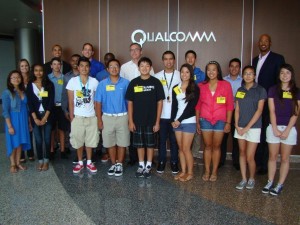
Pro Kids, which now adopts (at Howard’s wise instigation) the mission to help solve the growing digital divide between rich and poor, providing computer and technology access in a nurturing and safe environment in neighborhoods where the average family income is only $25,000. Golf is employed more as a fun and healthy backdrop. But the Wright family legacy is even greater. Ernie Jr., who took over Ernie’s growing business that offered half way house employment opportunities to adults finishing incarceration, now looks for mixed-use land opportunities to provide similar outreaches of hope to battered women, abused children and others in need. 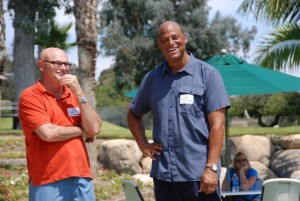
The legacy of Ernie Wright is the legacy born of the pain of Floyd, Edith, Cheryl and Laura Wright. It is now overseen by Victoria, Howard and Ernie Wright, Jr. It is a story remarkable for its pain and triumph. With all its color and complexity, it is a successful Buckeye, San Diego and American love story.
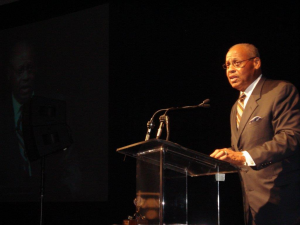
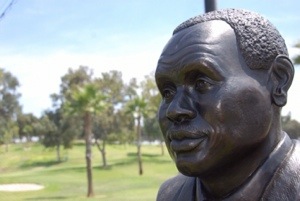

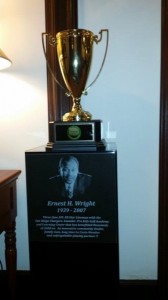
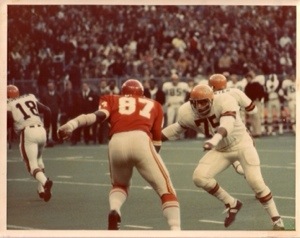
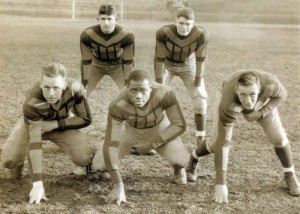
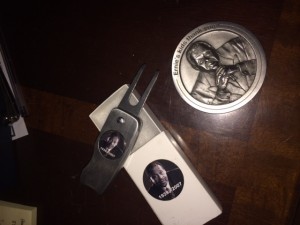
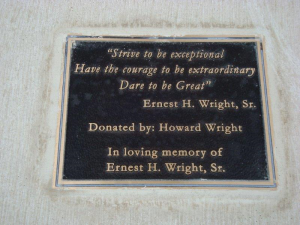

[…] Pro Kids is a thriving San Diego Inner City youth education and sports facility founded principally by Ernie Wright and Garth Gartrell. This is the rich, American story of Ernie Wright, right here. […]